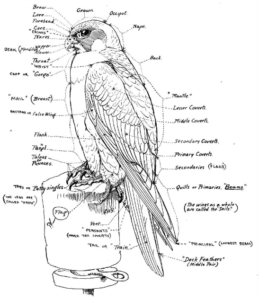 In medieval Europe just about everyone hunted. Game augmented the food supply and, in country areas was sometimes, with fish, the main form of protein. ‘The birds of the sky and the fishes of the deep are common property‘ was a commonly held belief, according to the 12th century John of Salisbury, though often not one shared by the landowners. Outside of the towns, all classes used birds in hunting and it was only the introduction of land enclosure ( at least in England ) and the development of accurate sporting guns which led to its decline. Only later did the modern argument against organised hunting with hounds arise, when it was already a minority activity.
In medieval Europe just about everyone hunted. Game augmented the food supply and, in country areas was sometimes, with fish, the main form of protein. ‘The birds of the sky and the fishes of the deep are common property‘ was a commonly held belief, according to the 12th century John of Salisbury, though often not one shared by the landowners. Outside of the towns, all classes used birds in hunting and it was only the introduction of land enclosure ( at least in England ) and the development of accurate sporting guns which led to its decline. Only later did the modern argument against organised hunting with hounds arise, when it was already a minority activity.
We know that a hierarchy for hunting with birds existed, though it was probably the high cost of 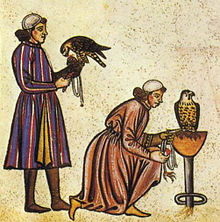 purchase and training of the larger, rarer birds and of having the land to fly them on, which meant that these became the birds of the landed aristocracy. Kings and Princes were keen to protect their birds and their hunting rights. Upon his accession to the throne of Castile and Leon in 1252, Alfonso X decreed that ‘no one may dare to remove either hawk or falcon or sparrowhawk from my kingdoms without my order‘.
purchase and training of the larger, rarer birds and of having the land to fly them on, which meant that these became the birds of the landed aristocracy. Kings and Princes were keen to protect their birds and their hunting rights. Upon his accession to the throne of Castile and Leon in 1252, Alfonso X decreed that ‘no one may dare to remove either hawk or falcon or sparrowhawk from my kingdoms without my order‘.
History is littered with instances of ransoms, fines and rents being paid wholly or in part with hawks. As late as 1764 the Dukes of Atholl were granted the feudal tenancy of the Isle of Man for a ‘rent’ of two white gyrfalcons, to be paid to successive 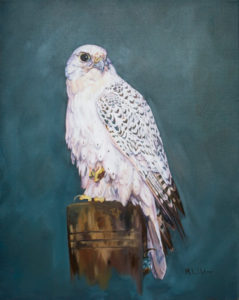 monarchs upon their coronation. There is also a story that a medieval Bishop of Ely, whose hawk was stolen from the cloisters while he was preaching, re-mounted the pulpit and swore to excommunicate the perpetrators of the theft. The bird was returned.
monarchs upon their coronation. There is also a story that a medieval Bishop of Ely, whose hawk was stolen from the cloisters while he was preaching, re-mounted the pulpit and swore to excommunicate the perpetrators of the theft. The bird was returned.
Gyrfalcons ( falco rusticolus ), especially white ones, were much sought after. When King Edward I of England sent a gift of four gyrfalcons to his brother-in-law, King Alfonso X in 1282, he apologised for their being grey not white. The ‘Greenland’ white falcon was most prized, but falcons generally were considered royal birds – avis regia.
In the Rich Codex copy of the Cantigas de Santa Maria there is an illustration of Alfonso, out heron 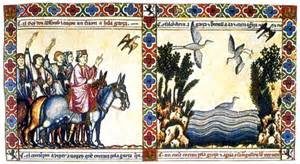 hunting with falcons ( see right below ). Like many monarchs of his time, female as well as male, Alfonso was fond of the chase, seeing it as good physical exercise and excellent preparation for warfare. The connection between war and hunting has been maintained until relatively modern times – the Duke of Wellington, for example, included a pack of foxhounds in his entourage for war in the Iberian peninsular.
hunting with falcons ( see right below ). Like many monarchs of his time, female as well as male, Alfonso was fond of the chase, seeing it as good physical exercise and excellent preparation for warfare. The connection between war and hunting has been maintained until relatively modern times – the Duke of Wellington, for example, included a pack of foxhounds in his entourage for war in the Iberian peninsular.
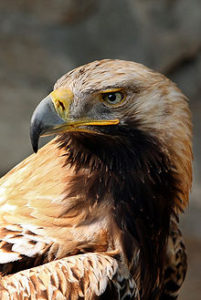 Falconry, it was claimed, by no less than the Holy Roman Emperor, ‘enables nobles and rulers disturbed and worried by the cares of state to find relief in the pleasures of the chase‘. Doubtless why the hapless Mary Queen of Scots enjoyed it, but then so did Catherine the Great. Incidentally, there is evidence of eminent women falconers, most famously in Japan, where the Masayori training method was devised by a woman falconer in the second century CE.
Falconry, it was claimed, by no less than the Holy Roman Emperor, ‘enables nobles and rulers disturbed and worried by the cares of state to find relief in the pleasures of the chase‘. Doubtless why the hapless Mary Queen of Scots enjoyed it, but then so did Catherine the Great. Incidentally, there is evidence of eminent women falconers, most famously in Japan, where the Masayori training method was devised by a woman falconer in the second century CE.
The eagle was, traditionally, the imperial bird, but was rarely used in medieval Europe, being very difficult to keep and train, though there are records of its use in Central Asia. So I’m afraid I have stretched credulity a little by including a semi-tame Imperial Eagle ( aquila heliaca ) in my new book, together with a white gyrfalcon named Abyssa.
If you enjoyed this article you might also enjoy Literary birds…. The High Sierras The journey continues


 RSS – Posts
RSS – Posts